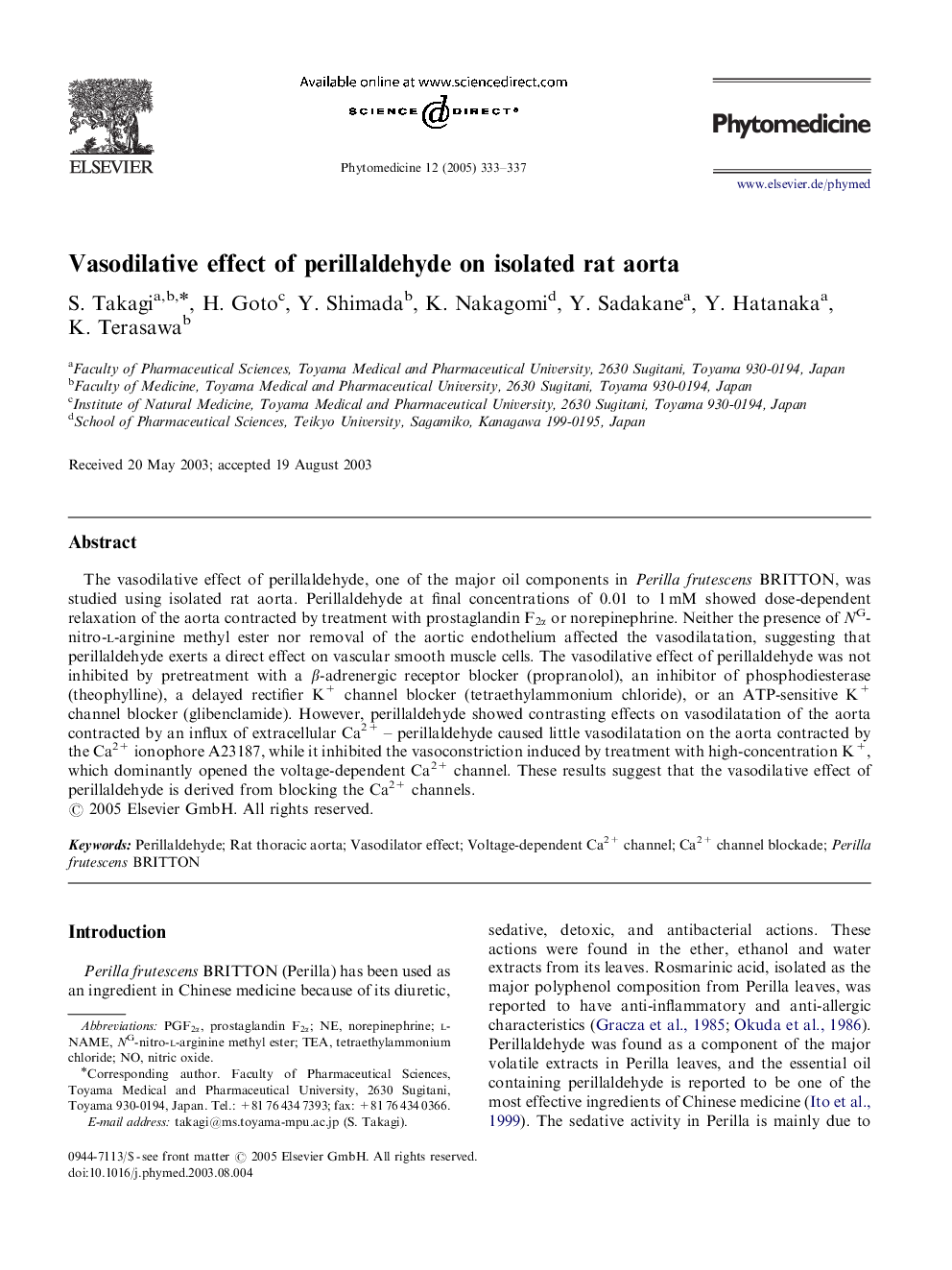| کد مقاله | کد نشریه | سال انتشار | مقاله انگلیسی | نسخه تمام متن |
|---|---|---|---|---|
| 8999843 | 1116229 | 2005 | 5 صفحه PDF | دانلود رایگان |
عنوان انگلیسی مقاله ISI
Vasodilative effect of perillaldehyde on isolated rat aorta
دانلود مقاله + سفارش ترجمه
دانلود مقاله ISI انگلیسی
رایگان برای ایرانیان
کلمات کلیدی
tetraethylammonium chlorideNG-nitro-l-arginine methyl esterPGF2αVasodilator effectl-NAME - L-NAMERat thoracic aorta - آئورت قفسه سینه موش صحراییNitric oxide. - اکسید نیتریک.norepinephrine - نوراپی نفرینProstaglandin F2α - پروستاگلاندین F2αPerillaldehyde - پریلالدئیدTEA - چایVoltage-dependent Ca2+ channel - کانال Ca2 + وابسته به ولتاژ
موضوعات مرتبط
علوم زیستی و بیوفناوری
بیوشیمی، ژنتیک و زیست شناسی مولکولی
بیوشیمی بالینی
پیش نمایش صفحه اول مقاله

چکیده انگلیسی
The vasodilative effect of perillaldehyde, one of the major oil components in Perilla frutescens BRITTON, was studied using isolated rat aorta. Perillaldehyde at final concentrations of 0.01 to 1 mM showed dose-dependent relaxation of the aorta contracted by treatment with prostaglandin F2α or norepinephrine. Neither the presence of NG-nitro-l-arginine methyl ester nor removal of the aortic endothelium affected the vasodilatation, suggesting that perillaldehyde exerts a direct effect on vascular smooth muscle cells. The vasodilative effect of perillaldehyde was not inhibited by pretreatment with a β-adrenergic receptor blocker (propranolol), an inhibitor of phosphodiesterase (theophylline), a delayed rectifier K+ channel blocker (tetraethylammonium chloride), or an ATP-sensitive K+ channel blocker (glibenclamide). However, perillaldehyde showed contrasting effects on vasodilatation of the aorta contracted by an influx of extracellular Ca2+ - perillaldehyde caused little vasodilatation on the aorta contracted by the Ca2+ ionophore A23187, while it inhibited the vasoconstriction induced by treatment with high-concentration K+, which dominantly opened the voltage-dependent Ca2+ channel. These results suggest that the vasodilative effect of perillaldehyde is derived from blocking the Ca2+ channels.
ناشر
Database: Elsevier - ScienceDirect (ساینس دایرکت)
Journal: Phytomedicine - Volume 12, Issue 5, 16 May 2005, Pages 333-337
Journal: Phytomedicine - Volume 12, Issue 5, 16 May 2005, Pages 333-337
نویسندگان
S. Takagi, H. Goto, Y. Shimada, K. Nakagomi, Y. Sadakane, Y. Hatanaka, K. Terasawa,